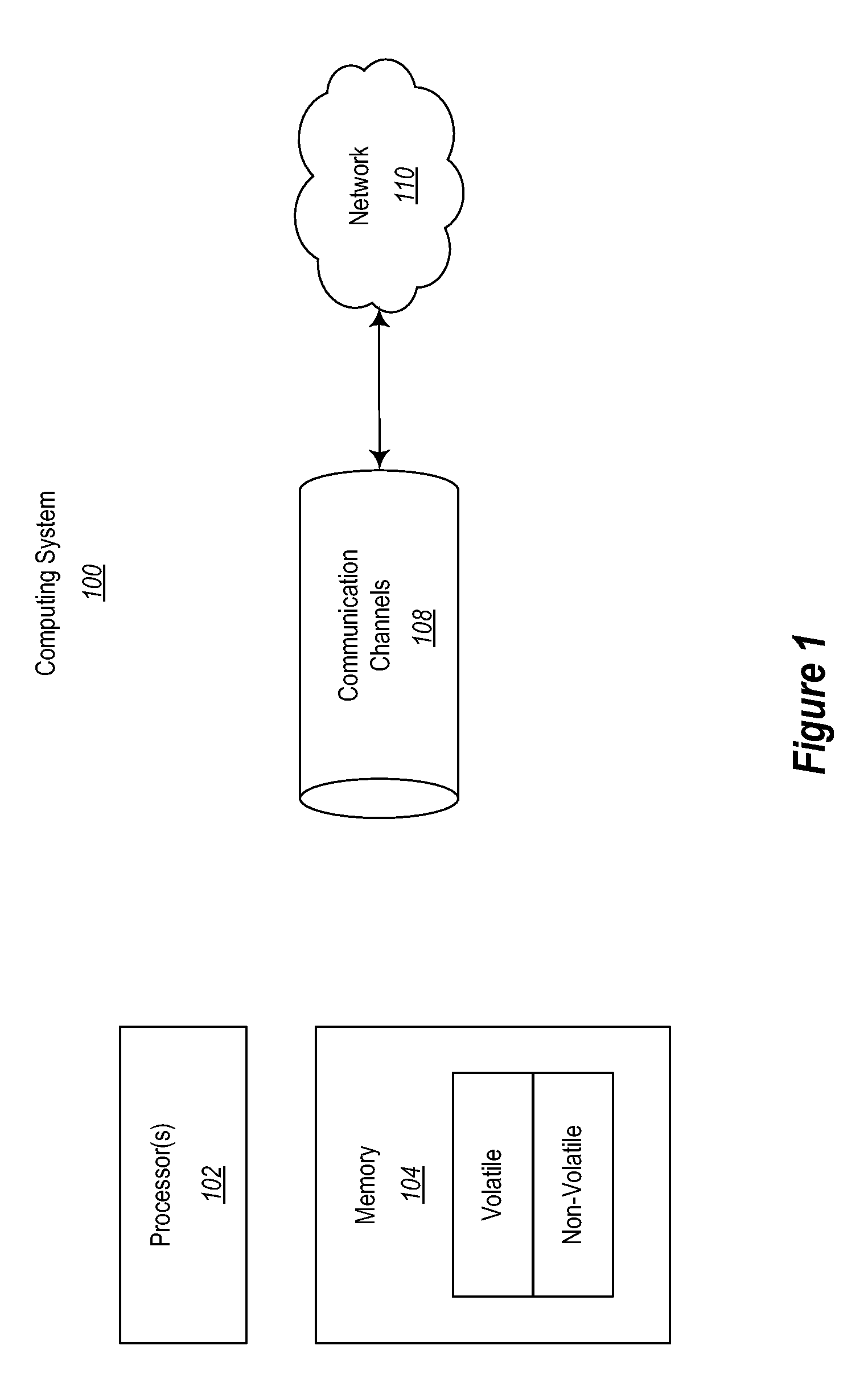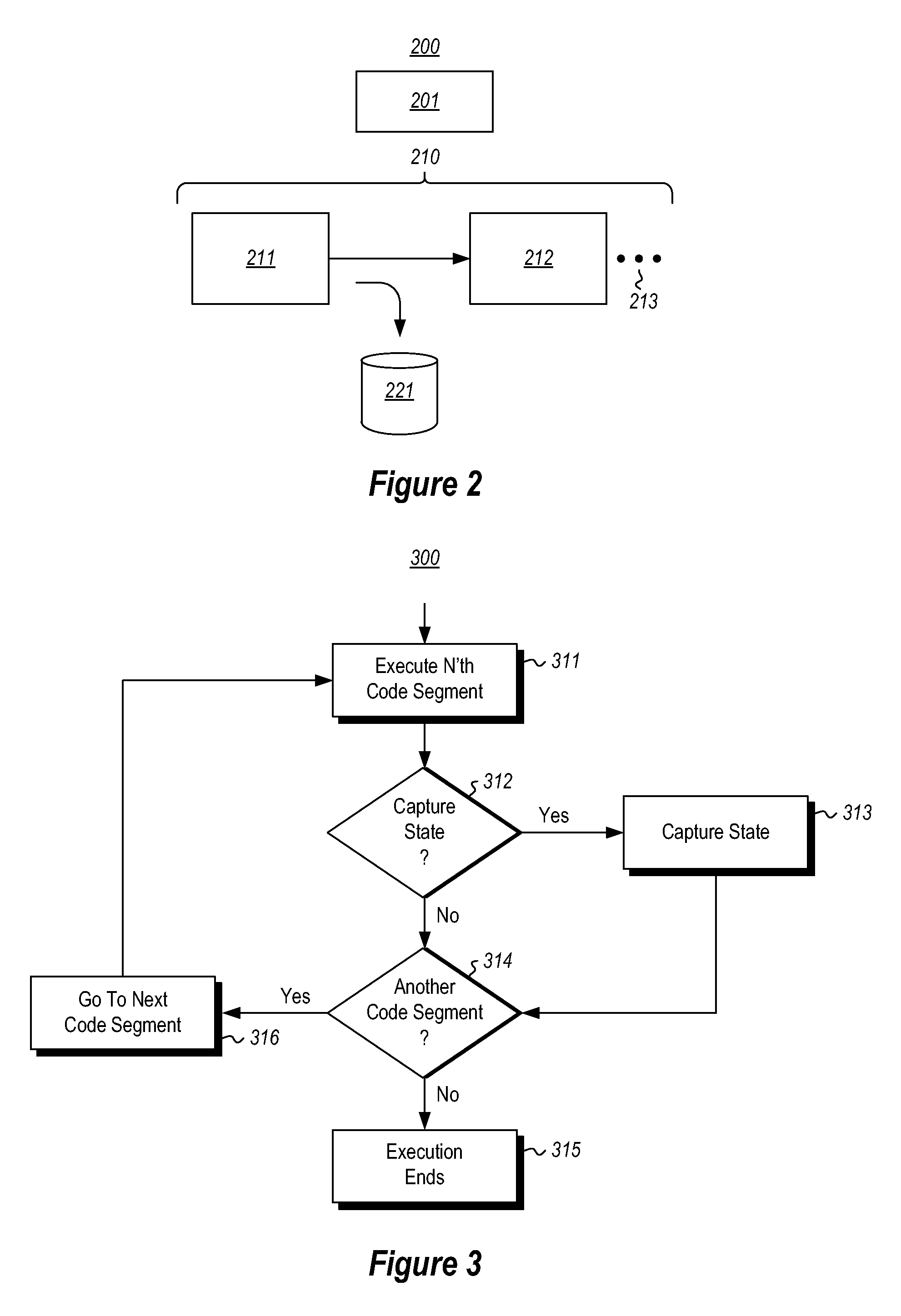State capture after execution in dependent sequences
a state capture and dependent sequence technology, applied in the field of state capture after execution in dependent sequences, to achieve the effect of facilitating authoring or evaluation
- Summary
- Abstract
- Description
- Claims
- Application Information
AI Technical Summary
Benefits of technology
Problems solved by technology
Method used
Image
Examples
Embodiment Construction
[0019]In accordance with embodiments described herein, the execution of a dynamic code segment sequence that includes at least two code segments in sequence is described. The first code segment is first executed and the corresponding state of the environment is captured. The second code segment is then executed. When the second code segment is later re-executed, the first code segment is not re-executed again. Rather, the environmental state is set to be the captured state that existed when the first code segment originally executed. Then, the second code segment may be executed without spending the resources required to re-run the first code segment. This may be helpful in a variety of scenarios. Three such scenarios are 1) at authoring or evaluation time, when the second code segment is run to a halt point, so that an available symbol set can be generated for that halt point to facilitate authoring or evaluation, 2) at deployment or evaluation time when second code segment may run...
PUM
 Login to View More
Login to View More Abstract
Description
Claims
Application Information
 Login to View More
Login to View More - R&D
- Intellectual Property
- Life Sciences
- Materials
- Tech Scout
- Unparalleled Data Quality
- Higher Quality Content
- 60% Fewer Hallucinations
Browse by: Latest US Patents, China's latest patents, Technical Efficacy Thesaurus, Application Domain, Technology Topic, Popular Technical Reports.
© 2025 PatSnap. All rights reserved.Legal|Privacy policy|Modern Slavery Act Transparency Statement|Sitemap|About US| Contact US: help@patsnap.com



